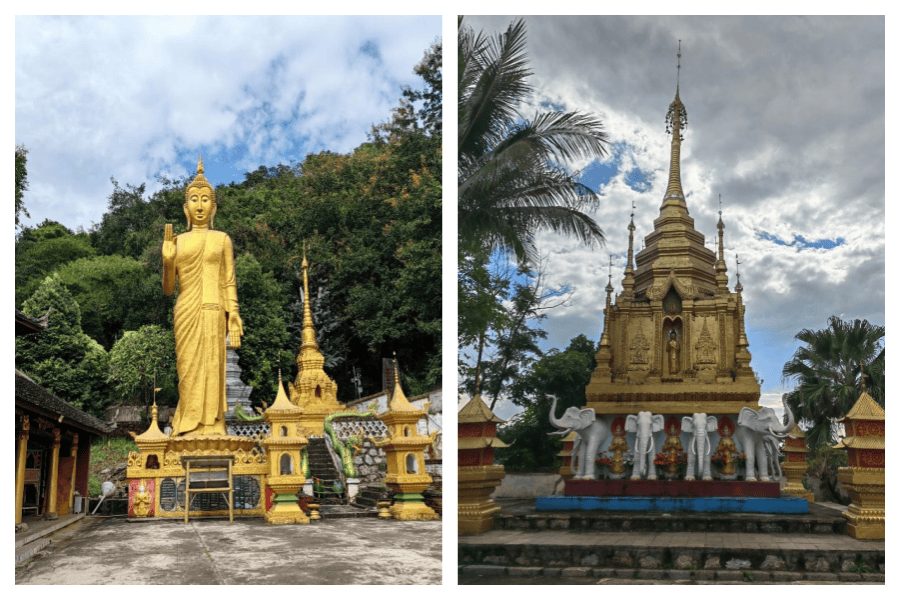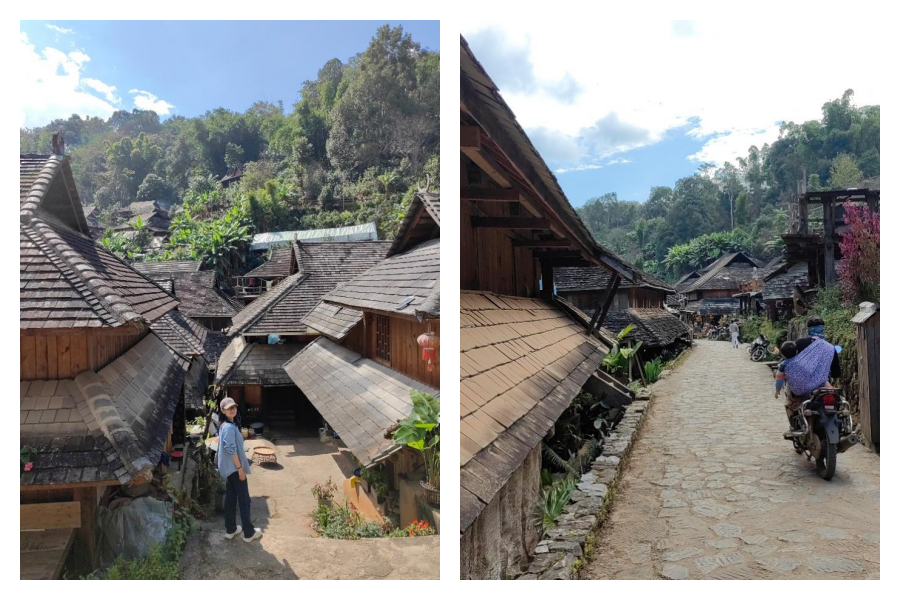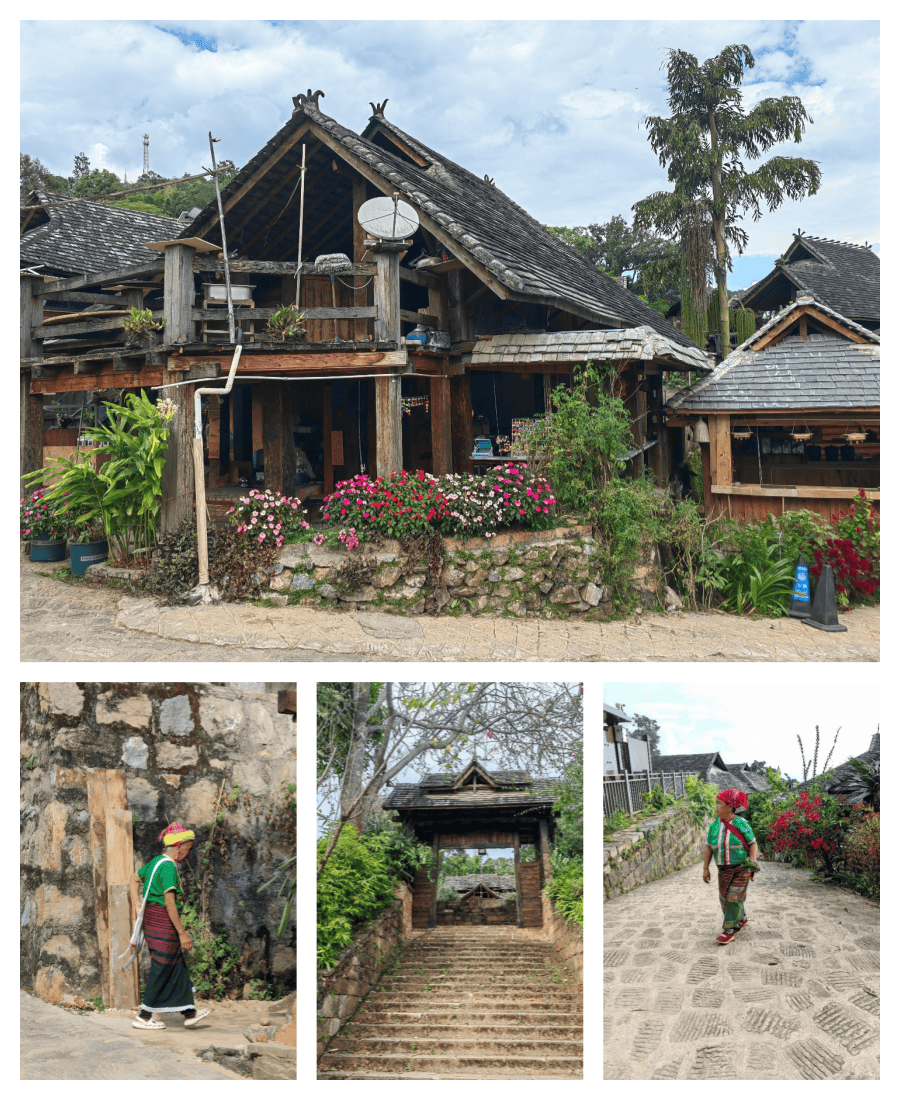
November 19th, Pu'er - Menglian
Menglian County is located in the southwest of Yunnan Province, China, bordering Myanmar with a border line of 133.399 kilometers. It is a border county inhabited by multiple ethnic groups such as the Dai, Lahu, and Wa ethnic groups. It is the last ancient Dai town in China, with a history of more than 700 years. "Nayun" means "inner city" and is composed of "three cities and two towns." The houses are a combination of Dai and Han styles. Here, there is a well-preserved Xuanfu Office and several Buddhist temples, containing rich Dai chieftain culture, religious culture, and folk culture. It is a famous historical and cultural city of the Dai people.


November 20th, Menglian - Nuogan Ancient Village - Wengji Ancient Village - Wengwa Ancient Village - Manghong
Menglian has two relatively famous farmers' markets. One is the largest Menglian Farmers' Market, and the other is the slightly smaller Nanlei Farmers' Market. However, we chose Nanlei next to Nayun Ancient Town because someone said that if you want to see strange ingredients and the traditional costumes of ethnic minority sisters, you can come directly to Nanlei. The vegetable markets in Yunnan seem to be very down-to-earth. You can eat flowers, mushrooms, insects... It will surely open your eyes and leave you in amazement. To catch the morning market, we went to Nanlei before dawn. It was really full of surprises.

After that, we drove to Nuogan Ancient Village, which took three hours. The road conditions were not very good.
Nuogan Ancient Village, also known as Shuizhai, is located in Huimin Town, Lancang Lahu Autonomous County, Pu'er City, Yunnan Province. It is a natural Dai village with a history of more than a thousand years. It is adjacent to Menghai County in Xishuangbanna in the east and Myanmar in the west. Because of its unique geographical location and cultural background, it is called the mysterious ancient village in the southwestern border. The ancient village is famous for its traditional appearance and primitive and simple architectural style. Most families make a living by growing tea, so the village is also full of a strong tea culture atmosphere. The architectural feature of the ancient village is the wooden stilted building, usually divided into two floors. The upper floor is used for storing sundries, and the lower floor is for living and dining. The top of each house is decorated with a pair of ox horns, which is designed to adapt to the humid and rainy climate characteristics of the tropical rainforest. The composition of Nuogan Ancient Village includes the village center, residential houses, Buddhist temples, and lanes, as well as some symbolic big trees. The Buddhist temple is located at the highest point of the village, providing a platform to view the surrounding scenery. Although the influence of modern civilization is gradually penetrating, Nuogan Ancient Village still maintains its original way of life. The residents here live a relatively quiet and simple life, far away from the hustle and bustle of the city and the intrusion of commercialization. Tourists can experience the charm of nature and the original state of life here, and at the same time, feel the simplicity and enthusiasm of the Dai people. Nuogan Ancient Village has not been over-developed yet and retains its ancient appearance and traditional culture, becoming an ideal place for people to seek inner peace and relaxation.


Wengji Ancient Village
Wengji Ancient Village is located in Mangjing Village, Jingmai Mountain, Lancang County, Yunnan Province. It is a thousand-year-old ancient village of the Blang ethnic group. The ancient village has a long history, and its ecological culture is well-preserved, with a strong primitive style, beautiful natural scenery, and prominent ethnic characteristics. The ancient village has attractions such as the ancient village, Buddhist temples, village gates, village centers, and ancient cypress trees, and mainly develops Blang ethnic cultural tourism. The architecture is of the traditional stilted structure with a steep roof covered with traditional tiles. The first floor is the stilted floor, mainly used for storage, and the second floor is the living space. The roads and pavements are mostly paved with cobblestones and slabs, perfectly integrating with the surrounding environment. Wengji Ancient Village is not only the inheritance place of Blang ethnic culture but also an important production area of Pu'er tea. It is known as the "Thousand-year-old Blang Ancient Village."

Wengwa Ancient Village
Wengwa Ancient Village is located in the middle of Jingmai Mountain, Lancang Lahu Autonomous County, Pu'er City, Yunnan Province. It is a traditional village mainly inhabited by the Blang ethnic group. The village is composed of the upper village, the old village, and the lower village. Among them, the old village is the center of the village and also the place where the historical buildings of the Blang ethnic group are most concentrated.

Yours Truly
Leena Li - Charmission Travel
